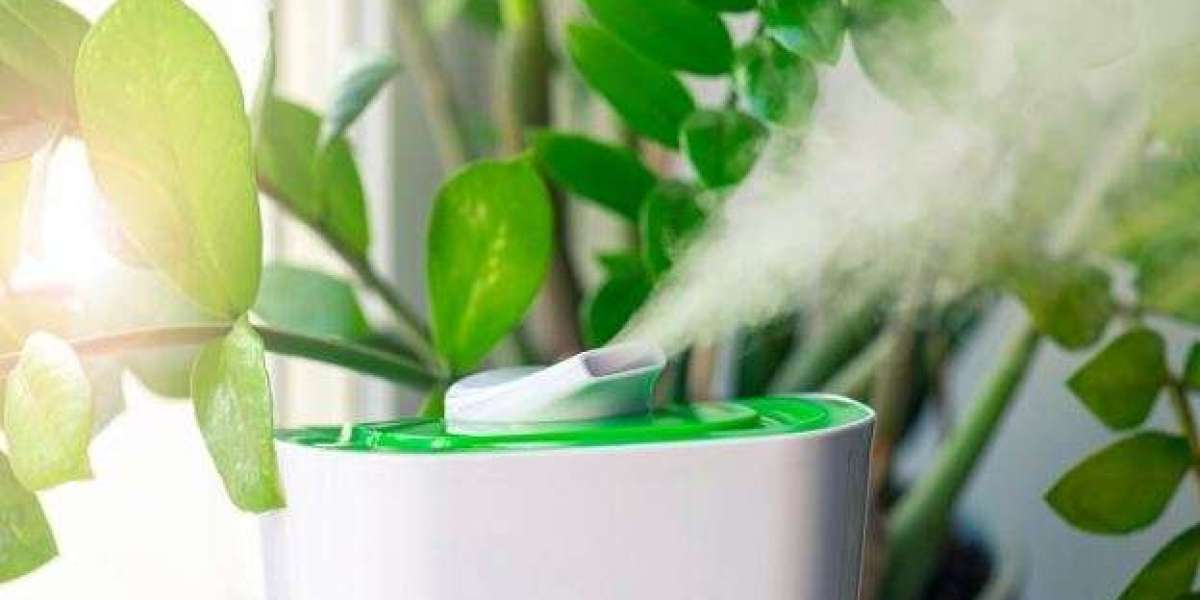Traditional air purifiers, while effective, often rely on disposable filters and high energy consumption, raising concerns about their environmental impact. Thankfully, the quest for cleaner air is increasingly focused on eco-friendly solutions. This article explores the fascinating world of sustainable air purification technologies, offering cleaner air for ourselves and a healthier planet.
The Problem with Conventional Air Purifiers
Traditional air purifiers typically employ HEPA (High Efficiency Particulate Air) filters to capture airborne particles. These filters are highly effective but have drawbacks:
Disposable Filters: Replacing them regularly generates waste, contributing to landfills.
High Energy Consumption: Many air purifiers run continuously, consuming significant energy, especially those equipped with features like ionizers or ozone generators.
The Rise of Sustainable Solutions:
As environmental consciousness grows, so too does the demand for eco-friendly air purification methods. Here are some promising technologies that offer cleaner air with a lower environmental footprint:
1. Biofiltration: Nature's Cleansing Power
Biofiltration mimics nature's way of cleaning air. It uses living organisms like plants, bacteria, and fungi to remove pollutants and odors from the air. These organisms break down contaminants through natural metabolic processes.
Benefits: Biofilters are highly efficient in removing a wide range of pollutants, including volatile organic compounds (VOCs), dust, and even some bacteria and viruses. They also offer the advantage of self-regeneration, requiring minimal maintenance compared to traditional filters.
Applications: Biofiltration systems are ideal for large spaces like office buildings, schools, and even wastewater treatment plants. They are also being explored for smaller-scale applications like indoor plant walls and living biofilters for homes.
2. Self-Cleaning Electrostatic Filters:
These filters use electrostatic technology to trap airborne particles like dust, pollen, and pet dander. Unlike traditional filters, however, they incorporate a self-cleaning mechanism that removes trapped particles automatically. This eliminates the need for frequent filter replacements, reducing waste.
Benefits: Self-cleaning filters offer sustained performance without the need for constant replacements. They are also energy-efficient, consuming less power compared to conventional air purifiers with disposable filters.
Applications: These filters are well-suited for residential use in homes and apartments. They can be integrated into existing air purification systems or stand-alone air purifiers.
3. Photocatalytic Oxidation (PCO): Harnessing Light for Purification
PCO technology utilizes ultraviolet (UV) light to break down pollutants at the molecular level. When UV light interacts with a catalyst, typically titanium dioxide, it creates highly reactive molecules called free radicals. These free radicals then attack and break down air contaminants into harmless byproducts like carbon dioxide and water vapor.
Benefits: PCO is effective against a wide range of pollutants, including VOCs, bacteria, and viruses. Additionally, it doesn't require any replacement filters, making it a low-maintenance solution.
Limitations: PCO technology can generate some ozone as a byproduct. While generally considered safe in low concentrations, it may irritate the respiratory system for people with sensitivities. Proper ventilation is crucial when using PCO air purifiers.
Applications: PCO systems are well-suited for commercial applications like hospitals, food processing facilities, and even air conditioning units.
4. Sustainable Materials: Building Greener Filters
Innovation extends beyond the technology itself. Researchers are developing filters made from recyclable or biodegradable materials like recycled plastic or plant-based fibers. These filters offer a more sustainable alternative to traditional synthetic filters, further reducing the environmental impact of air purification.
Beyond Technology: Lifestyle Choices for Cleaner Air
While technology plays a crucial role, sustainable air purification also involves everyday choices:
Ventilation is Key: Regularly opening windows and doors promotes natural air circulation, flushing out pollutants and stale air.
Reduce Indoor Pollutants: Identify and minimize sources of indoor pollution like cleaning products, scented candles, and air fresheners.
Choose Eco-Friendly Cleaning Products: Opt for natural cleaning solutions that don't release harmful VOCs into the air.
Embrace the Power of Plants: Houseplants can act as natural air purifiers, removing pollutants and enhancing indoor air quality.
The Future of Sustainable Air Purification: A Collaborative Approach
Sustainable air purification isn't just about technology alone. It requires a collaborative effort, combining technological advancements with responsible use and conscious choices. As research progresses, we can anticipate the emergence of even more eco-friendly technologies, offering cleaner air for humans and a healthier planet.
Improved Efficiency: Researchers are constantly striving to develop more energy-efficient air purification technologies. This will not only reduce the environmental impact but also make these systems more affordable for consumers.
Smart Integration: Integration with smart home technologies can allow for automated air purification based on real-time air quality data. This ensures optimal performance while minimizing energy consumption.
Personalization: Future air purification systems may be personalized to address specific needs. Imagine air purifiers that target allergens for allergy sufferers or VOCs for those living in polluted urban areas.
Conclusion: Breathing Easier Together
Sustainable air purification holds immense potential for creating a healthier and cleaner world. By embracing these eco-friendly technologies, coupled with mindful lifestyle choices, we can breathe easier - both literally and figuratively. As we move towards a future focused on environmental responsibility, sustainable air purification solutions offer a win-win scenario for our health and the health of our planet.
Taking Action: Choosing the Right Solution for You
With all these innovative technologies emerging, choosing the right sustainable air purification system for your needs can be overwhelming. Here are some tips to consider:
Needs Assessment: Identify your primary concerns - allergens, odors, or a combination of pollutants.
Space Considerations: Choose a system suitable for the size of the space you want to purify.
Energy Efficiency: Look for Energy Star certified models that consume less power.
Maintenance Requirements: Consider the ease of filter cleaning or replacement for long-term sustainability.
Sustainability Features: Opt for systems with eco-friendly filters, low energy consumption, and minimal waste generation.
Remember, sustainable air purification is a journey, not a destination. By embracing new technologies, making conscious choices, and working together, we can create a cleaner, healthier future for generations to come.
Original Source: https://bit.ly/442Y937









